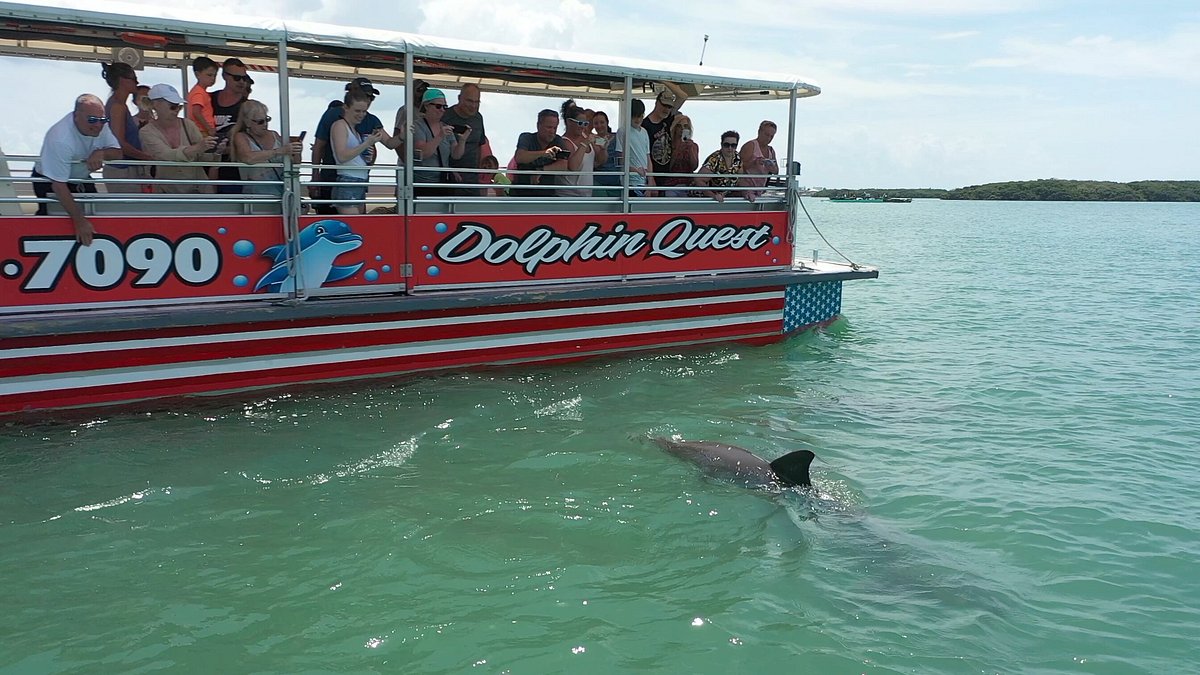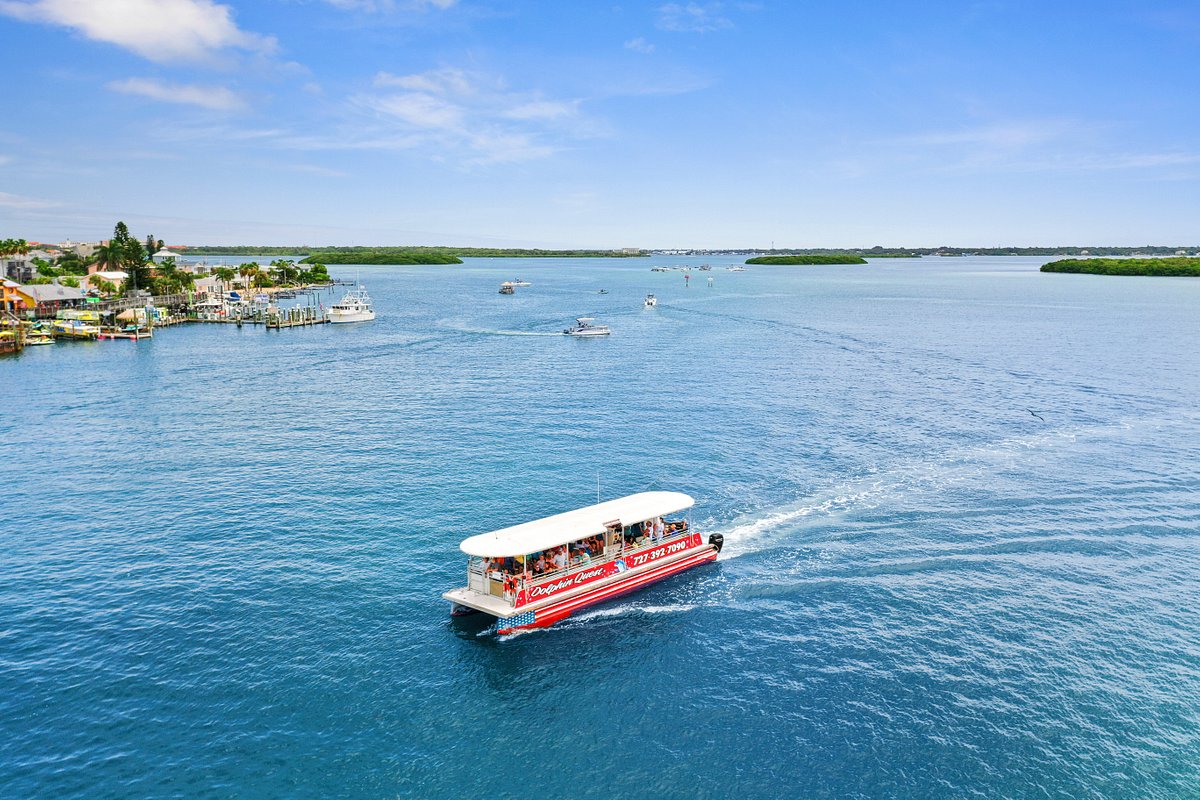Imagine the excitement of seeing dolphins jumping through the waves, their smooth bodies shining in the sun. Dolphin watching is a thrilling experience that connects us with these intelligent and playful sea creatures. When is the best time to go on this adventure? Let’s look at the best times and conditions for a great dolphin-watching experience.

When Are Dolphins Most Active?
Dolphins, like many of us, are early risers and night owls. These charismatic creatures are most active during the early morning and late afternoon hours. Why? It’s all about the food, folks! These periods align perfectly with their feeding times, making them the prime hours for dolphin spotting.
But here’s a little secret: dolphins have a special affinity for low tide. During these times, they have better access to their favorite fishy snacks, turning the ocean into their personal all-you-can-eat buffet. So, if you want to catch dolphins in action, keep an eye on those tide charts!
The Best Time for Dolphin Watching Tours
While dolphins are active year-round, some seasons offer a more comfortable and rewarding experience for us land-dwelling observers. The warmer months, typically from May to September, are considered the prime time for dolphin watching tours.
Why, you ask? Well, it’s not because dolphins suddenly decide to put on a show for summer tourists. It’s all about the weather, my friends. Clear skies and calm seas during these months create ideal conditions for spotting these marine acrobats. Plus, let’s be honest, standing on a boat in balmy weather is far more enjoyable than shivering in a winter coat, right?
The Magic of Dolphin Watching: Best Times and Locations
Now that we’ve covered when to go, let’s talk about where to go. Dolphins, being the smart cookies they are, tend to hang out where the food is plentiful. Coastal regions, bays, and estuaries are hotspots for dolphin activity. These areas often have an abundance of fish, making them the equivalent of a dolphin’s favorite restaurant.
Here’s a pro tip: keep an eye out for fishing boats. Dolphins are opportunistic feeders and often trail behind these vessels, taking advantage of the disturbed fish. It’s like they’re ordering takeout!
Best Times of Day
Let’s break it down further:
- Early Morning (6 AM – 9 AM): As the sun rises, so do the dolphins. This is when they’re often most active, hunting for breakfast and playing in the calm morning waters.
- Late Afternoon (3 PM – 6 PM): As the day winds down, dolphins gear up for their evening meal. The fading light also creates beautiful conditions for photography.
Remember, these aren’t strict rules. Dolphins don’t wear watches (although that would be adorable), so their schedules can vary. But these timeframes offer the highest probability of dolphin sightings.
Tips for a Successful Dolphin Watching Experience
Want to maximize your chances of a spectacular dolphin encounter? Here are some insider tips:
- Check the Weather: Clear skies and calm seas are your best friends when it comes to dolphin watching. Rough waters or heavy rain can make spotting dolphins challenging and, let’s face it, a lot less fun.
- Choose Your Tour Wisely: Not all dolphin watching tours are created equal. Look for experienced operators with a good track record. They know the local dolphin hotspots and can provide fascinating insights about these marine mammals.
- Bring the Right Gear: Binoculars can help you spot dolphins from afar. Don’t forget sunscreen, a hat, and sunglasses to protect yourself from the sun’s glare off the water.
- Be Patient: Dolphin watching isn’t like visiting a zoo. These are wild animals in their natural habitat. Sometimes, you might need to wait a while before spotting them. But trust us, it’s worth the wait!
- Respect the Dolphins: Remember, we’re guests in their home. Choose tour operators that follow responsible wildlife viewing practices and don’t disturb the dolphins’ natural behavior.
The Environmental Impact of Dolphin Watching
While dolphin watching can be an incredible experience, it’s crucial to consider its environmental impact. Responsible dolphin watching can actually contribute to conservation efforts by raising awareness and funding research. However, irresponsible practices can disturb dolphin populations and their habitats.
Here’s how you can be an eco-friendly dolphin watcher:
- Choose tour operators that follow wildlife viewing guidelines
- Don’t feed or touch the dolphins
- Dispose of your trash properly to prevent marine pollution
- Support local conservation efforts
Conclusion: The Joy of Dolphin Watching
There’s something magical about seeing dolphins in their natural habitat. Whether it’s their playful leaps, their intelligent eyes, or their graceful swimming, dolphins have a way of captivating us and reminding us of the beauty of the natural world.
By choosing the right time (early morning or late afternoon), the right season (warmer months), and the right location (coastal areas with plenty of fish), you can set yourself up for an unforgettable dolphin watching experience.
Remember, the best dolphin watching experiences are those that respect these magnificent creatures and their environment. So grab your binoculars, hop on a boat, and get ready for a whale of a time… or should we say, a dolphin of a time!
Happy dolphin watching, folks!

Female Dolphins in Group Hunting and Foraging: Masters of the Ocean
The dolphin is one of the ocean’s most beloved creatures. Known for their playful nature, intelligence, and acrobatic leaps, dolphins captivate humans around the world.

Experience the Best Daily Boat Tour and Sightseeing Cruises at Dolphin Quest John’s Pass
Step aboard for an adventure on the sparkling waters of John’s Pass and the Gulf Coast with Dolphin Quest John’s Pass. Our daily boat tours

Dolphin Quest: 5 Things That Make It an Unforgettable Dolphin-Watching Adventure
If you’re looking for a mix of adventure, relaxation, and beautiful scenery, Dolphin Quest at John’s Pass in Madeira Beach is a perfect choice. It’s



